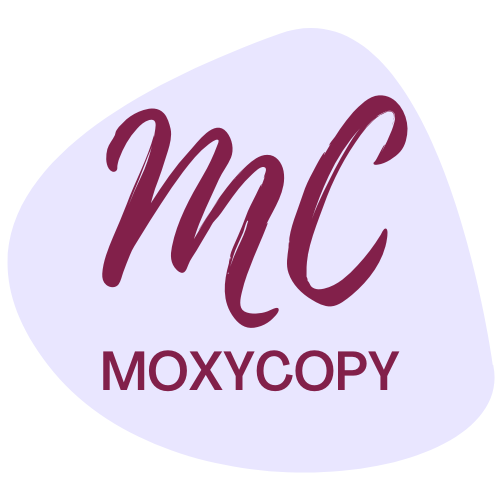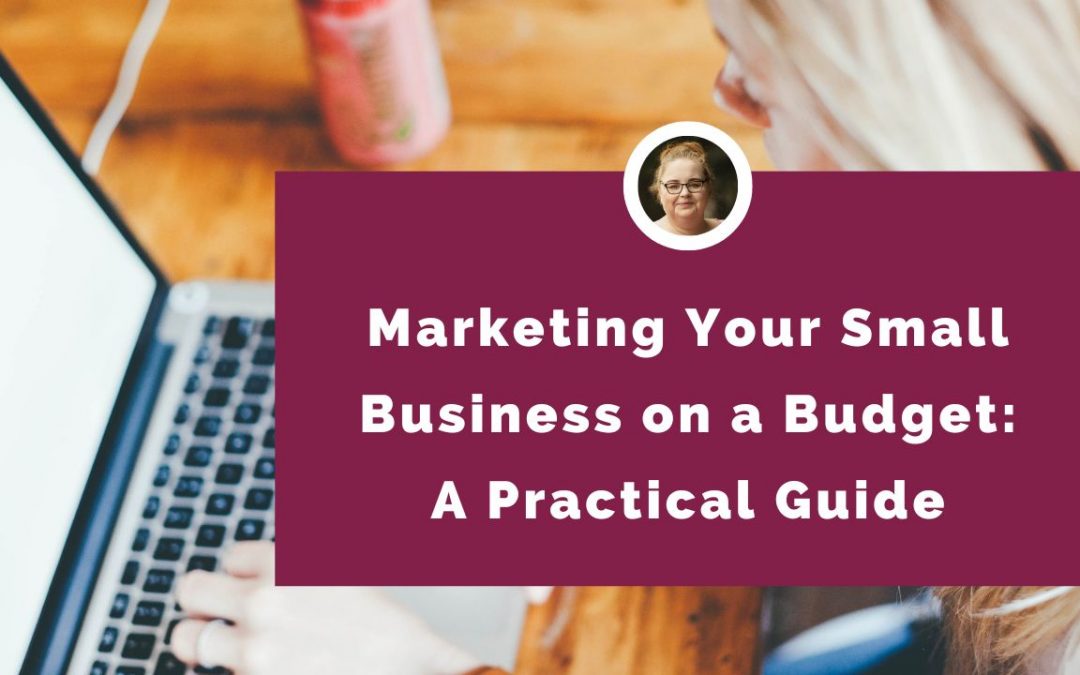So, we all know the struggle. You’ve poured your heart and soul into your business and created amazing products or services. However, spreading the word feels like an uphill battle, especially when your marketing budget is pretty much non-existent. But fear not! You certainly don’t need a fortune to build a thriving customer base. Here, I’ll dive into some practical and budget-friendly strategies to help with marketing your small business on a budget.
Understanding Your Audience: The Foundation
Before we explore the different strategies of marketing your small business on a budget, let’s talk about the foundation of all successful marketing: understanding your target audience. This means picturing your ideal customer.
Who are they?
| Demographics | Age, gender, income, location, education, occupation, family life, etc. |
| Needs and Desires | What are their problems, pain points, and aspirations? |
| Values & Beliefs | What’s important to them? What motivates them? |
| Online Behaviour | Where do they spend their time online? Which social media platforms do they use? What websites do they visit? |
| Offline Behaviour | Do they attend industry events or local gatherings? Do they read magazines or listen to specific radio stations? |
Why is this crucial?
By understanding your target audience, you can:
- Craft a compelling message that resonates with them. Speak directly to their needs and desires using language they understand.
- Choose the right marketing channels. If your audience spends most of their time on Instagram, that’s where you should focus your efforts, not on a niche online forum they rarely visit.
- Develop targeted content and campaigns. Create valuable content and marketing messages that are relevant and interesting to your ideal customer, increasing the likelihood of engagement and conversion.
How can you gain this understanding?
- Analyse your existing customer base: Look at your current customer data and try to identify common characteristics and behaviours.
- Conduct market research: Utilise online surveys, polls, and focus groups to gather insights directly from your target audience.
- Research online communities: Join relevant online forums and social media groups where your target audience gathers and listen to their conversations.
- Develop buyer personas: Create detailed profiles of your ideal customers, incorporating demographic information, needs, and behaviours.
Understanding your audience is not a one-time activity. As your business grows and the market evolves, you may need to revisit and refine your understanding to ensure your marketing efforts remain relevant and effective.
Now that you have a solid foundation, let’s explore some free and low-cost marketing strategies to help you reach your target audience and grow your business.
Free & Low-Cost Ways for Marketing Your Small Business on a Budget
Now, let’s explore some powerful marketing strategies that won’t break the bank:
Content Marketing: Be a Thought Leader
Blog:
Your blog can be a powerful tool for attracting new customers, establishing your expertise, and building thought leadership. Here’s how to leverage your blog effectively:
- Focus on valuable content: Use powerful headlines and create informative, engaging blog posts relevant to your target audience’s needs and interests. Share industry insights, offer helpful tips and tutorials, or provide behind-the-scenes glimpses into your business.
- Maintain consistency: Publish new content regularly to keep your audience engaged and coming back for more. Aim for a consistent posting schedule, even if it’s just once or twice a month.
- Optimise for search engines: Use relevant keywords throughout your blog posts to improve your website’s ranking in search results. This increases the chances of potential customers finding your content organically.
- Promote your blog: Share your blog posts on social media, include them in your email newsletters, and consider guest blogging on other relevant websites to reach a wider audience.
Social Media:
Social media platforms offer a dynamic and interactive way to connect with your target audience, build brand awareness, and foster community. Here’s how to maximise your social media presence:
- Choose the right platforms: Identify where your target audience spends their time online and focus your efforts on those platforms. You don’t need to be on every platform so work out whether you’re audience is on Facebook, Instagram, LinkedIn or X and start there.
- Create engaging content: Don’t just post sales pitches. Share interesting and visually appealing content like images, infographics, videos, and stories.
- Interact with your audience: Respond to comments and messages, participate in conversations, and host live Q&A sessions to build relationships and demonstrate your commitment to customer service.
- Run social media contests or giveaways: Encourage engagement and generate excitement by launching contests or giveaways relevant to your target audience and products/services.
- Track your results: Utilise social media analytics tools to monitor your performance, understand what resonates with your audience, and refine your strategy accordingly.
By creating valuable content, maintaining consistency, and engaging with your audience, you can leverage your blog and social media channels to attract new customers, build brand loyalty, and ultimately drive business growth.
Remember, consistency and a commitment to providing value are key to success when utilizing these free or low-cost marketing strategies.
Email Marketing: Building a Loyal Community
Email marketing remains a powerful and cost-effective way to reach your target audience, build relationships, and foster brand loyalty. Here’s why it’s so valuable:
- Direct Communication: Unlike social media algorithms that can limit your reach and remove your account at anytime, email allows you to directly connect with your subscribers in their inbox. This provides a more personal and controlled communication channel, fostering a stronger connection with your audience.
- Building Relationships: Regular email interactions allow you to nurture relationships with potential and existing customers. By providing valuable content, exclusive offers, and updates, you demonstrate your expertise, build trust, and encourage loyalty.
- Segmentation & Personalisation: Unlike mass marketing, email marketing allows you to segment your audience based on demographics, interests, or purchase history. This enables you to send targeted emails with personalised content that resonates with specific groups, increasing engagement and conversion rates.
- Building Brand Awareness & Authority: Consistent email campaigns help keep your brand at the forefront of your audience’s minds. By sharing valuable content and insights, you become a trusted source of information and establish your brand as an authority in your industry.
- Driving Sales & Conversions: Well-crafted email campaigns can directly drive sales and conversions. You can use email marketing to promote new products or services, offer special discounts, and incentivise purchases through targeted campaigns.
Remember, building a successful email list involves providing value and respecting your subscribers’ inboxes. Create a high-quality lead magnet to encourage people to sign up for your email list and then focus on offering great content. Avoid spammy tactics, and respect their preferences to maintain a healthy and engaged community.
Search Engine Optimisation (SEO): Get Discovered Online
SEO helps your website climb the ranks in search engine results, making it more visible to potential customers searching for your products or services. While some aspects of SEO involve technical expertise, there are plenty of free and beginner-friendly resources to get you started. You can grab my FREE guide to SEO Made Easy here. Focus on relevant keywords in your website content and claim your Google My Business listing.
Public Relations & Networking: Building Relationships
Don’t underestimate the power of positive word-of-mouth. Be the kind of business that people love to talk about! Here are some ways to build relationships and encourage word-of-mouth marketing:
- Offer excellent customer service: This is important for any business, but it’s essential when relying on referrals and word-of-mouth marketing.
- Encourage referrals: Implement a loyalty program that rewards customers for referring new business.
- Positive online reviews: Encourage satisfied customers to leave positive reviews on platforms like Google My Business and Yelp.
- Network with other businesses: Build relationships with complementary businesses in your community and explore cross-promotion opportunities.
- Public relations: Develop press releases and reach out to local media for potential coverage. You might score a feature story or an interview, boosting your brand awareness.
Paid Marketing Strategies: A Targeted Approach
While we’re focusing on budget-friendly strategies, paid options can be valuable tools, especially when used strategically. Here are some considerations for a limited budget:
- Targeted Social Media Ads: Reach a specific audience with laser focus by running targeted ads on platforms like Facebook or Instagram. Start small and track the results to ensure you’re getting a good return on investment (ROI).
- Local Online Directories: Consider investing in paid listings on relevant online directories like Yelp or local business directories. This can help potential customers find you easily.
Measuring & Refining: The Continuous Journey
Marketing isn’t a “set it and forget it” game. Tracking your results using analytics tools is crucial to see what’s working and what needs tweaking. This might involve website traffic, leads generated, or sales conversions. Use your data to refine your strategy and constantly improve your marketing efforts. Experiment with different approaches, analyse the data and adapt your tactics to maximise results.
Marketing Your Small Business on a Budget Conclusion
Marketing your small business on a budget is entirely possible with the right strategy and a little creativity. By understanding your audience, utilising free and low-cost options, constantly adapting your approach, and measuring your results, you can reach your target audience, build brand awareness, and achieve your business goals. Now, go out there and make your mark on the world!
Marketing Your Small Business on a Budget FAQ
Q: I don’t have time to write blog posts or manage social media.
A: Consider collaborating with a freelance writer for content creation or social media management. Even a small budget can go a long way when you outsource tasks strategically. Feel free to drop me a message at emma@moxycopy.co.uk to find out more about how I can help.
Q: How much should I invest in marketing?
A: There’s no one-size-fits-all answer, but it’s recommended to allocate 5-10% of your revenue to marketing. However, start with what you can comfortably afford and adjust your budget as you assess the results and your business grows.
Q: What if I need more help?
A: Numerous online resources and free marketing courses are available to help you learn and grow. Additionally, don’t hesitate to connect with other small business owners and share experiences. Remember, we’re all in this together!
So, a little about me: as a content and copywriter, I help businesses attract and nurture their ideal clients to grow their sales, which lights me up. Drop me a message today if you need help identifying your perfect client, developing your messaging, or marketing your services.
Furthermore, if you’re having problems getting your emails opened, it could be your subject lines. So, I compiled 45 of my highest-performing subject lines, and you can grab them for FREE here.
You can also download my FREE guide to make SEO Easy. A handy desktop guide packed with quick and easy tips to get your business found online.

